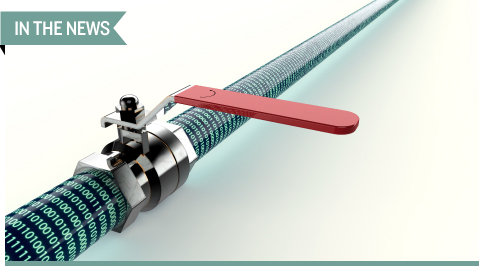
Image credit: iStock.com / posteriori
Pathology and informatics experts have issued a series of best practices for laboratories to follow in establishing high-quality bioinformatics pipelines, a significant ingredient in interpreting the results of next-generation sequencing (NGS). The recommendations were published in the Journal of Molecular Diagnostics.
A bioinformatics pipeline leverages operation environments and software and database technology to process the large amounts of raw sequence data and metadata generated from NGS. Such information is used to find genomic variants to help tailor disease management in patients. Seeing a need to streamline procedures on pipeline development, the Association for Molecular Pathology (AMP) in collaboration with the College of American Pathologists (CAP) and the American Medical Informatics Association (AMIA) convened a working group to produce a set of consensus guidelines.
“While the recent democratization of NGS technologies has contributed to its rapid adoption in the clinical practice, the constant technology evolution and the absence of clear recommendations for analytical validation of NGS bioinformatics pipelines have contributed to variabilities in clinical laboratory practice,” AMP member Somak Roy, MD, assistant professor of pathology at University of Pittsburgh Medical Center, guidelines co-author, and chair of the working group, told CLN Stat.
Lack of clear guidelines means that each lab is left to figure out its own best practice, effectively recreating the wheel, Roy emphasized. If poorly developed, bioinformatics pipelines run the risk of compromising patient care by generating results that are inaccurate or difficult to understand. “Guidelines help laboratories reduce the time to implementation by giving them a checklist of requirements, thereby allowing them to plan adequately for time, labor, and resources,” Roy said.
Peer-reviewed and approved guidelines help labs improve quality by setting minimum thresholds for good practice. “Laboratories may certainly exceed those thresholds to their own comfort level or as appropriate to the nuances of their own testing,” Roy suggested.
The working group’s set of 17 consensus recommendations summarizes current knowledge, exposes challenges, and provides guidance on how to develop, implement, and validate high-quality bioinformatics pipelines. To craft these best practices, the group looked at evidence from a literature review, empirical data, current laboratory practice surveys, and expert professional experiences.
“First and foremost, the new recommendations emphasize the critical role of the properly trained and qualified molecular laboratory professional to achieve optimal NGS test quality,” AMP board member and guidelines co-author Alexis B. Carter, MD, physician informaticist at Children’s Healthcare of Atlanta, told CLN Stat. Any clinical lab that offers NGS-based testing should validate its pipeline, ensuring that a qualified medical professional who has been properly trained in NGS interpretation and certification is surveying the validation process.
“Validation of the NGS bioinformatics pipeline must be appropriate and applicable for the intended clinical use, specimen, and variant types detected of the NGS test,” the authors stated. Labs should also confirm that there’s a representative set of variants with high-quality independent data and report appropriate validation metrics by variant type.
The pipeline’s design, implementation, and validation processes should comply with applicable laboratory accreditation standards and regulations. To ensure accuracy of software-generated Human Genome Variation Society variant nomenclature, labs should install alerts to indicate when any corrections or manual reviews of nomenclature and annotations should take place. Any corrections should be documented.
“Laboratories must include specific measures to ensure that each data file generated in the bioinformatics pipeline maintains its integrity and provides alerts for or prevents the use of data files that have been altered in an unauthorized or unintended manner,” the authors recommended. They also emphasized the importance of using unique identifiers to preserve a sample’s identity throughout the NGS pipeline.
In addition to clinical labs, the guidelines aim to help NGS instrument manufacturers, software companies, and researchers develop new technology that will further advance safe and responsible medicine, Carter said. Many clinical laboratories are already complying with many of these guidelines, she acknowledged. Going forward, they should focus on changes they need to make to their existing pipelines and processes, and then plan accordingly for those changes, she said.
“Some of the guideline recommendations may require some laboratories to make fundamental changes to sequence file content to standardize sample identification, and this has to be implemented carefully with an appropriate amount of validation prior to being put into clinical use,” she advised.
The recommendations represent the third in a series of guidelines designed to improve NGS workflow. Previously published guidelines focused on interpreting oncology sequence variants and NGS-based oncology panel validation.